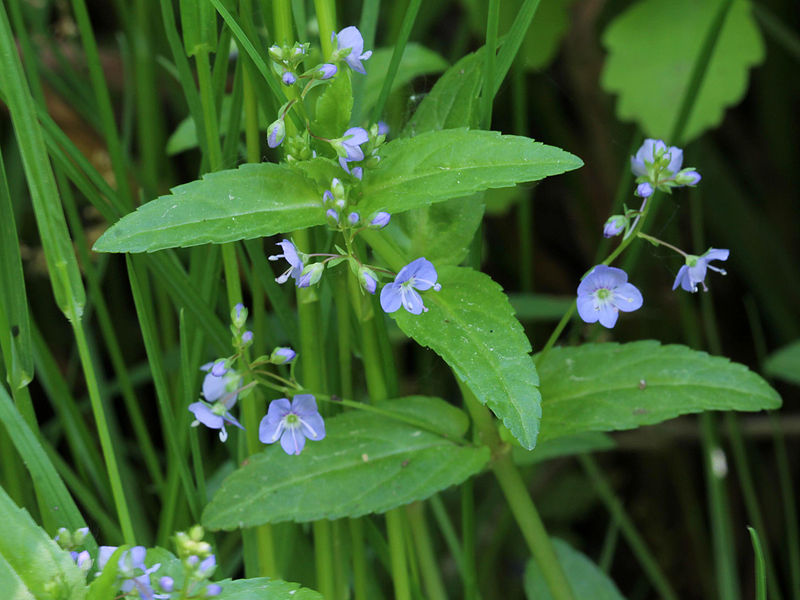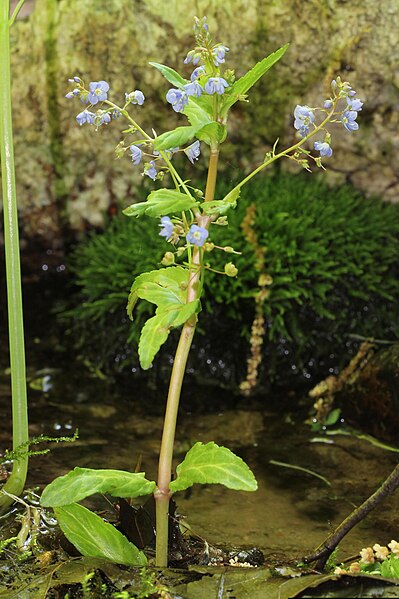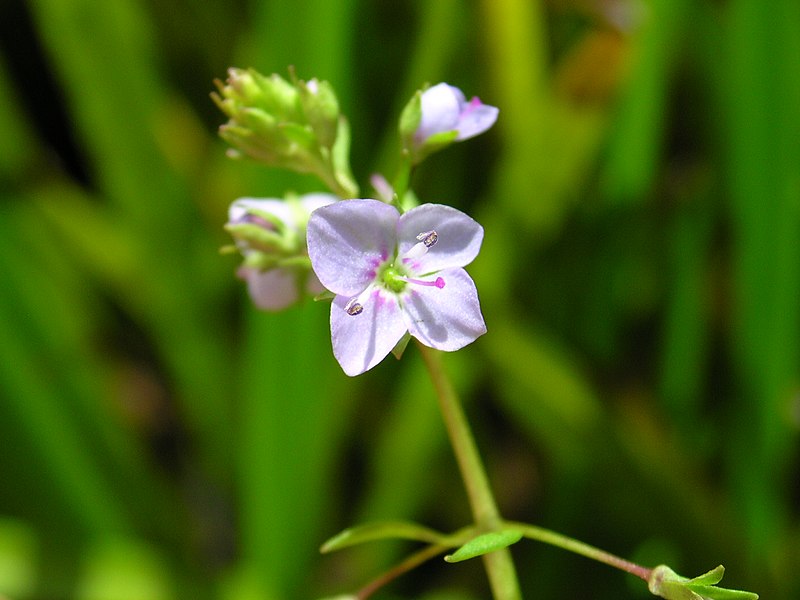American Brooklime Identification – Veronica americana
Heads up
American Brooklime, or Veronica americana, belongs to the Plantaginaceae family, which is also called the Plantain family. For those of you who might be familiar with terms like “speedwell”, the American Brooklime is sometimes also referred to as the American Speedwell.
American Brooklime: Key Parts in Photos



Where to find it
The American Brooklime has an affinity for water. It prefers slightly shaded to sunny areas and is most commonly found in wet habitats. So, if you’re walking near swamps, stream banks, or ponds, keep an eye out for this plant. It isn’t a very tall plant, with its height ranging between 4 to 20 inches.
How to identify American Brooklime
A distinguishing feature of this plant is its racemes. Raceme is a type of flower cluster where individual flowers are attached by short stalks along a central stem. American Brooklime racemes showcase 10 to 15 flowers, sprouting from both the top of the stem and where the leaves join the stem. Each flower is about 1/3 inch across and has four petals. Three of these petals are about the same size, while one is a bit smaller. These petals range from light blue to lavender. At the center of these flowers, you’ll see two stamens and a single style protruding out, with green sepals that might be just as long as the petals.
The leaves are positioned oppositely on the stem. These leaves are simple and don’t divide into smaller leaflets. Ranging up to 3 inches in length, they can be longer than they are wide, often lance or egg-shaped. They often have serrated edges, but sometimes can have smooth edge. These leaves have a short stalk attaching them to the main plant stem. The American Brooklime has hairless, unbranched stems that can be reddish and can either stand upright or lie flat.
After the flowering phase, this plant produces fruit, which is a capsule type. Think of it as a small container filled with seeds. These capsules are slightly flattened, a bit wider than long, and can house up to 30 seeds.
